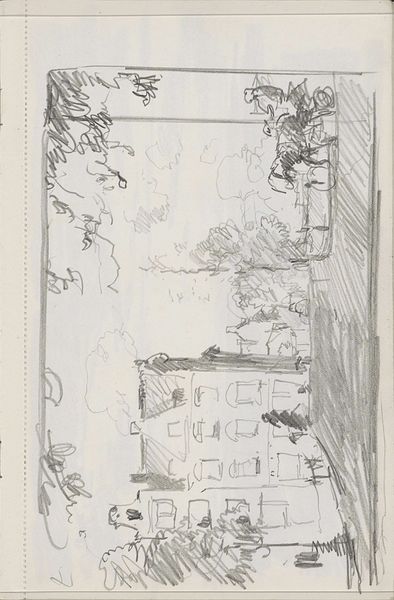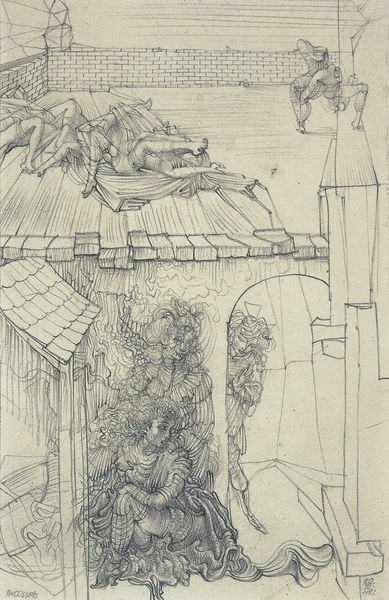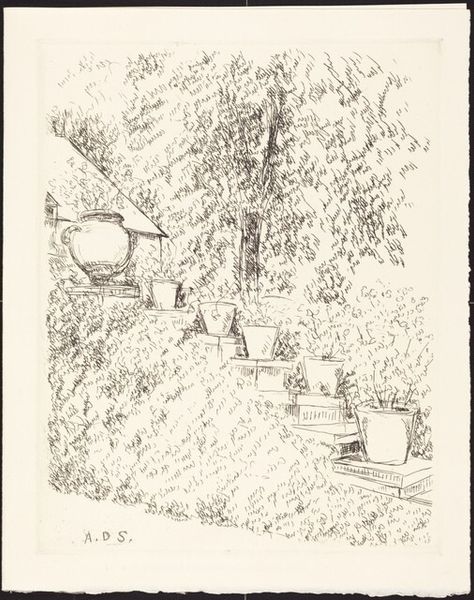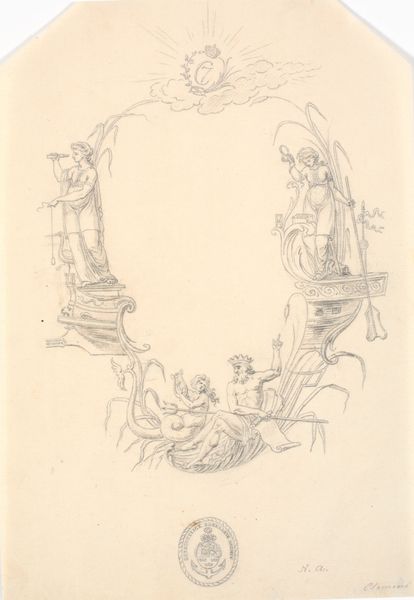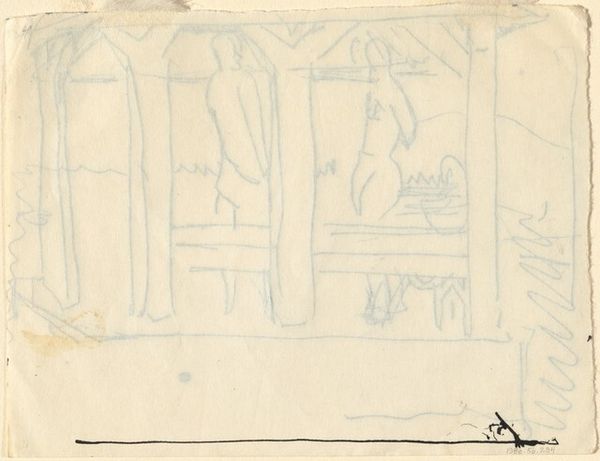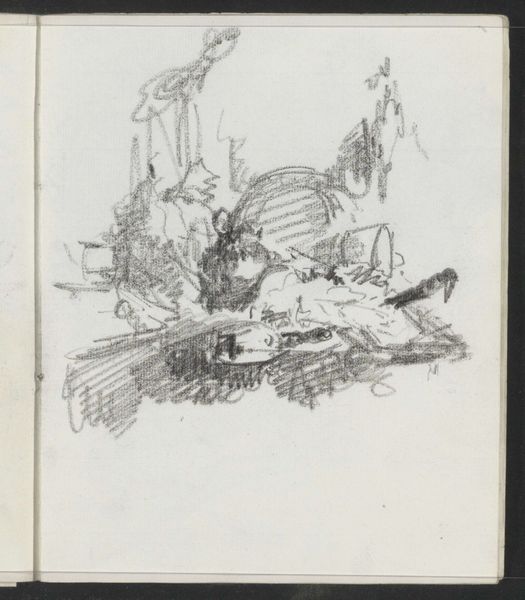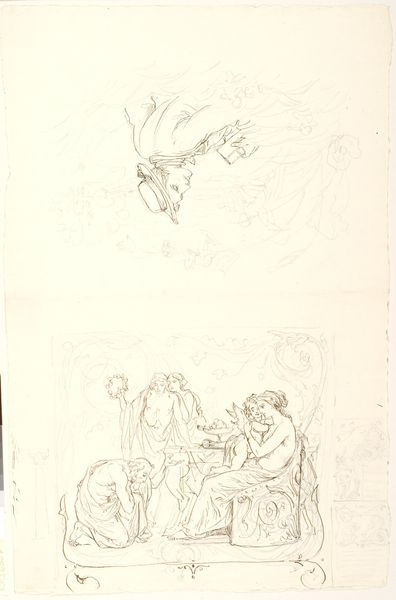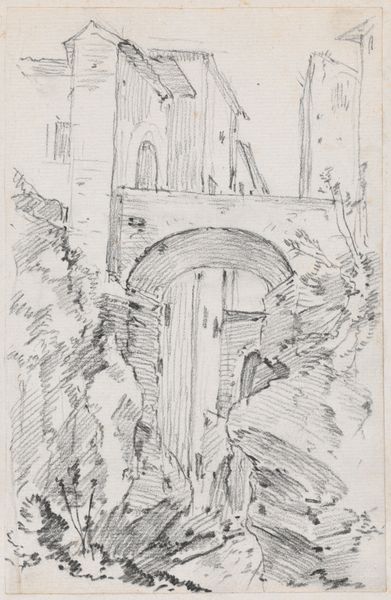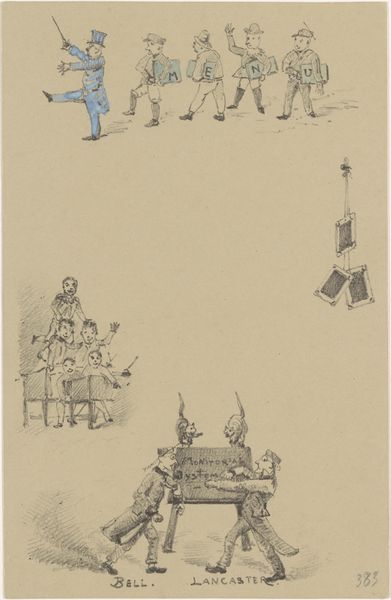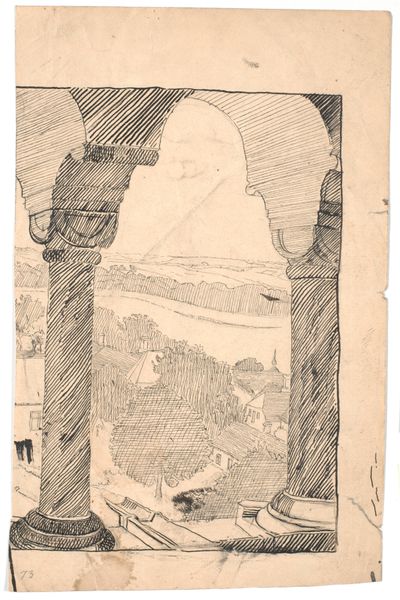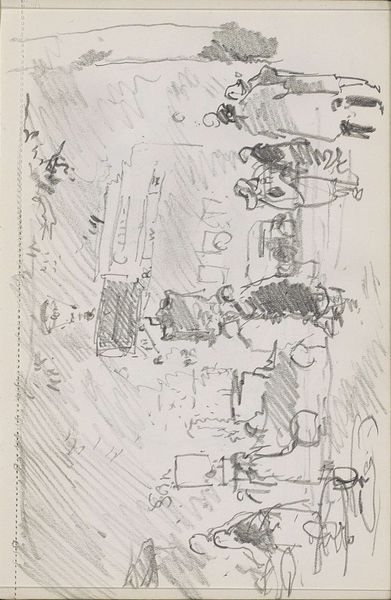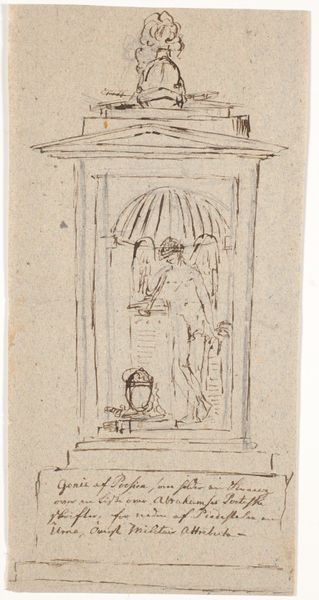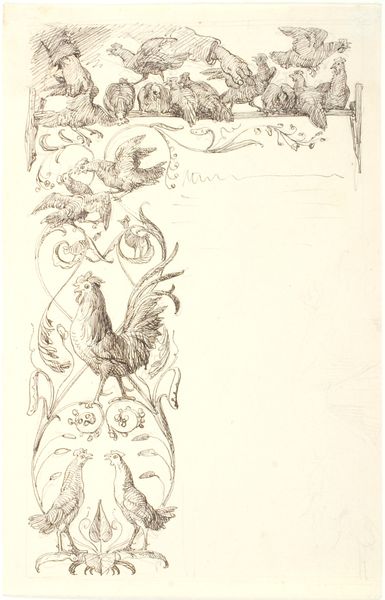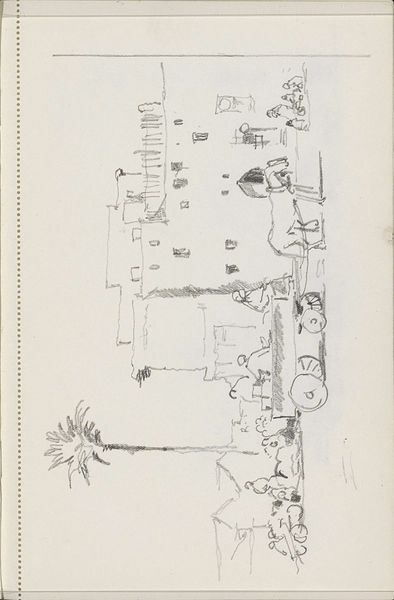
drawing, ink, pen
#
drawing
#
comic strip sketch
#
mechanical pen drawing
#
pen illustration
#
pen sketch
#
figuration
#
ink line art
#
linework heavy
#
ink
#
sketchwork
#
pen-ink sketch
#
line
#
pen work
#
pen
#
genre-painting
#
storyboard and sketchbook work
#
modernism
Copyright: Tsuguharu Foujita,Fair Use
Curator: Let’s consider Foujita’s “Maligny,” a pen and ink drawing created in 1951. Editor: The scene pulses with life. All these lines, creating a frenetic energy around the theater and a stillness in the audience. It’s such a striking contrast, making me feel simultaneously excited and... trapped, almost. Curator: That juxtaposition between stasis and kinesis really speaks to Foujita’s unique perspective. He melds Eastern calligraphic traditions with Western modernist sensibilities. The figures rendered in confident lines recall traditional Ukiyo-e prints even as the subject matter depicts a distinctly Parisian setting. There's a narrative layering. Editor: You know, that "narrative layering" makes me wonder about who has access to these cultural events. Foujita is literally putting bodies on different tiers, making access visible in his composition. Those on the lower level literally form the foundation. Curator: That’s insightful! Perhaps the artist’s commentary is on the performative aspects of class and societal structures? Symbols in the ballet have always carried significance, encoding ideals of femininity, virtue, and social aspirations. Editor: Absolutely. The ballet often operates as a mirror, reflecting the dominant values and expectations placed upon women. What is accepted. How bodies should appear on display and in movement. In Foujita's picture, we witness the gaze of the spectators almost trapping the performer into place. And who is telling her story? Who benefits? Curator: A relevant lens to analyze the piece. Considering Foujita's personal history too – a Japanese artist who became a prominent figure in the École de Paris. It really asks who are we, when performing for audiences so eager to absorb another culture’s interpretation of self and life? Editor: A complex exchange that invites the viewer into the picture's narrative. One where we are not sure about the role we might play. Curator: Precisely. “Maligny” shows us Foujita’s art transcends mere aesthetics; it serves as an introspective dialogue on identity, spectatorship, and social stratifications through symbols of place, practice, and body. Editor: And it's not always a pretty picture, making it such a compelling drawing, so full of meaning.
Comments
No comments
Be the first to comment and join the conversation on the ultimate creative platform.
